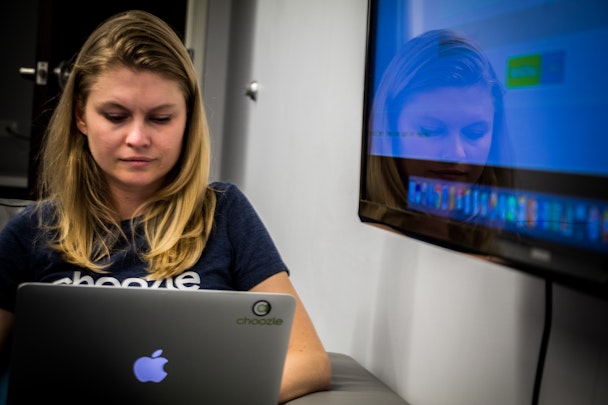Does gender have a place in digital advertising?
Whether it’s a Chevy truck commercial boasting a hyper-masculine man or a woman luxuriating in the bubbles of a frothy shampoo in an Herbal Essences ad, gender stereotyping is a common advertising tactic. Brands use it to identify which gender an ad is targeting.

Does gender have a place in digital advertising?
The curious people on Choozle’s Marketing team wondered: How do consumers respond to these kinds of ads? We asked 500 men and women what they thought in our survey, Gender Stereotyping in Digital Advertising. Beyond what you’d expect, the results are surprising.
What we wanted to know
The increasing capabilities of data targeting have made it easier to stereotype men and women in advertisements, but does it mean it’s effective or well-received by the intended audience? We set out to measure gender’s impact on purchase intent.
We asked consumers
Using the SurveyMonkey Audience panel, we polled 500 people: A broad cross-section of 250 men and 250 women, ages 18 and older with U.S. residency and a household income between $0 and $200,000 plus. The survey provided a definition of “gender stereotype” and included examples of gender stereotyping in advertisements. We asked participants the following questions:
- How do you perceive gender-specific ads?
- Do the ads affect you?
- What aspects of the ads promote stereotypes?
- Do you find brands that break gender stereotypes more favorable?
- Should the advertising industry be held responsible for breaking or reinforcing stereotypes?
What we uncovered
The results were mixed. Fifty percent of men and sixty-eight percent of women said they would likely be affected by advertisements that break gender stereotypes. Thirty-six percent of total respondents said they like brands that break gender stereotypes in ads. Fifty-five percent of respondents said they sometimes prefer to buy products made for their gender, while forty-two percent said they sometimes prefer products made for a gender other than their own. Thirty-seven percent of overall respondents agreed the advertising industry has a social responsibility not to promote gender stereotypes.
View the full survey results here.
Takeaways
While some respondents expressed preference towards buying products advertised for their gender, a significant number also said they buy products made for a gender other than their own. Purchase intent could increase if advertisers—ones who make unisex products—create messaging and designs for men and women. And consumers like forward-thinking companies. Progressive ads can shape brand perception and help a company's effectiveness.
Megan Sullivan-Jenks, Director of Marketing & Communications, Choozle
Megan Sullivan-Jenks is Director of Marketing & Communications at Choozle – Easy Digital Advertising®. She executes marketing and advertising strategies for the company with a keen eye on engagement and ROI. From nonprofits and emergency services to consumer goods and software, Megan has helped brands create online and offline marketing strategies that are engaging and memorable.
Content by The Drum Network member:

Choozle
Choozle is a digital marketing and advertising platform available to clients across the country.
Find out more